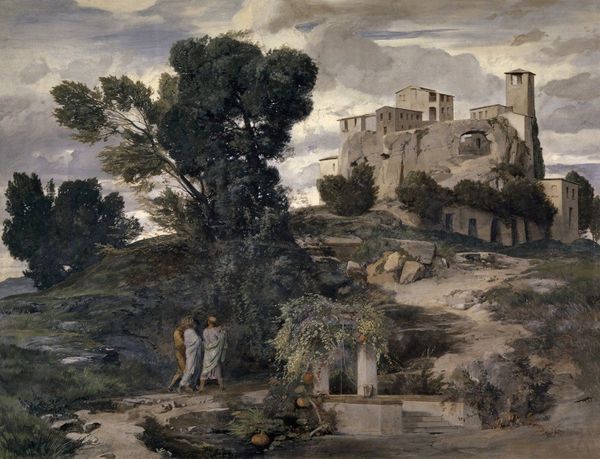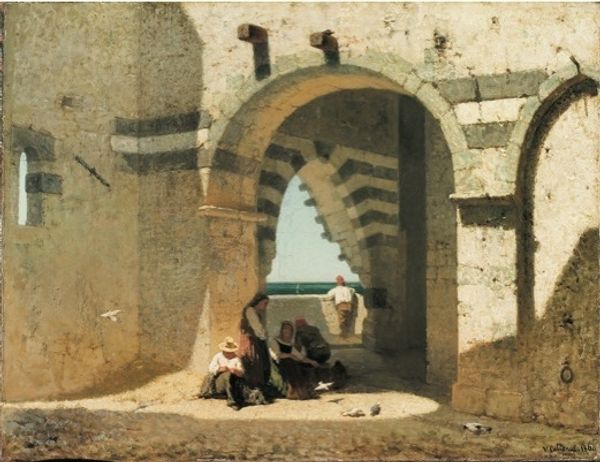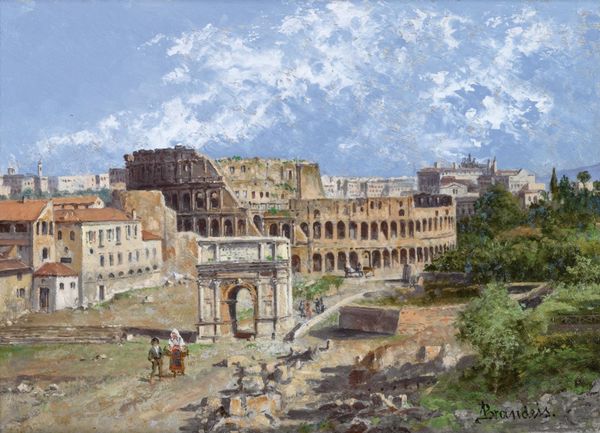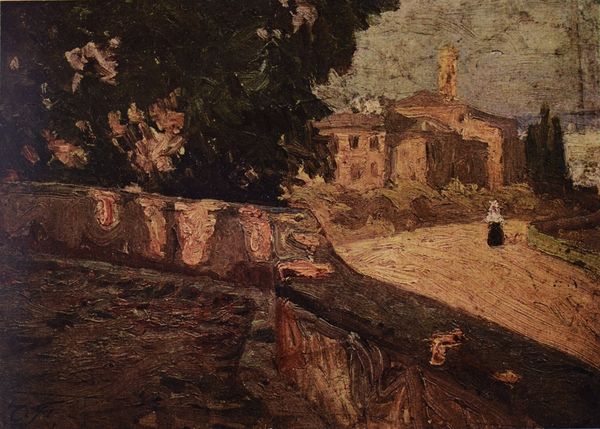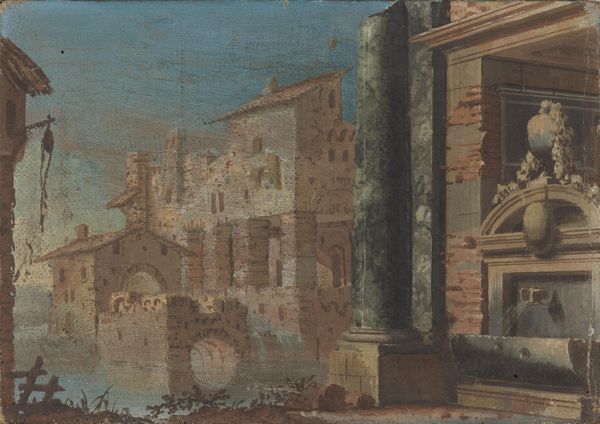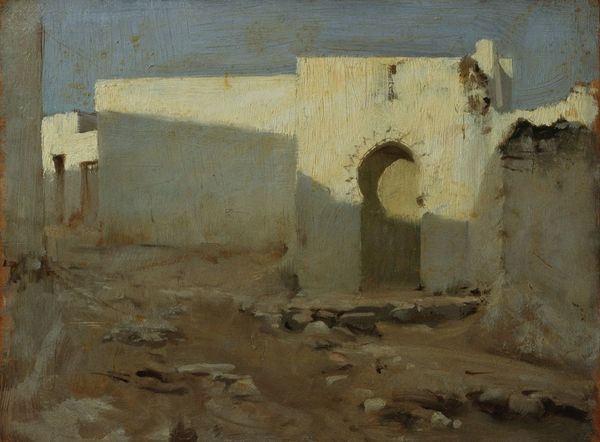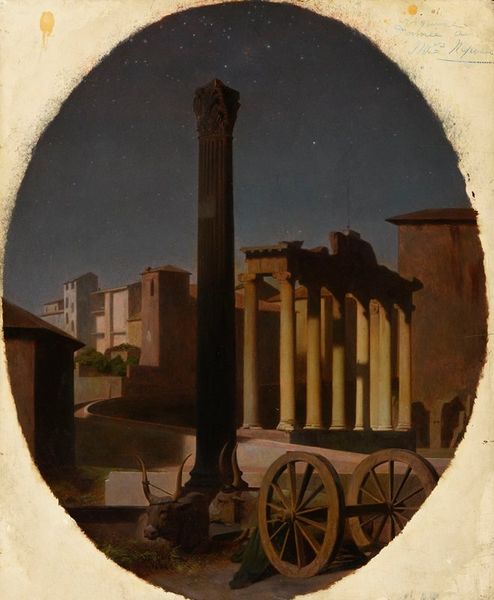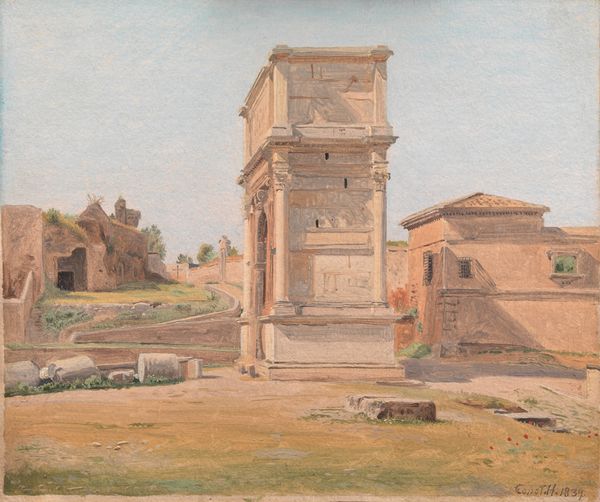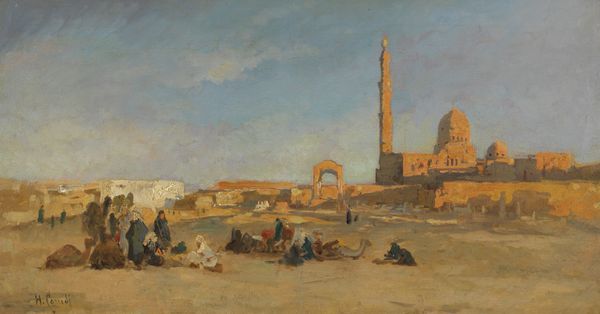
Dimensions: 17.5 cm (height) x 28 cm (width) (Netto), 25 cm (height) x 35 cm (width) (Brutto)
Theodor Philipsen painted this view of the so-called Temple of Vesta in Rome, using oil on canvas, sometime in the 19th century. Philipsen was part of a generation of artists turning away from academic painting, and towards a more immediate engagement with the world. The qualities of oil paint lend themselves to this effect. Its slow drying time allowed Philipsen to blend and rework the colors, capturing the nuances of light and atmosphere he observed. You can see how the loose, sketch-like brushstrokes create a sense of immediacy, as if the scene were captured in a fleeting moment. While not as obviously laborious as sculpture or intricate craftwork, painting like this involves its own kind of labor. It demanded close observation, skillful handling of the brush, and an ability to translate three-dimensional space onto a two-dimensional surface. The painting becomes more than just a representation; it's a record of the artist's encounter with a particular place and time, reminding us of the value of skilled handwork, even in an increasingly industrialized world.
Comments
No comments
Be the first to comment and join the conversation on the ultimate creative platform.
